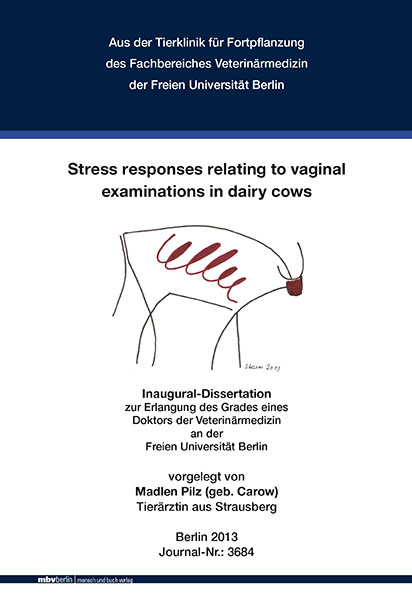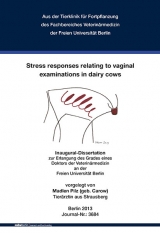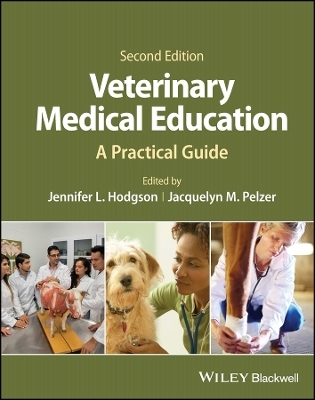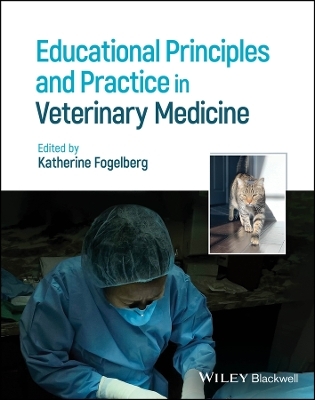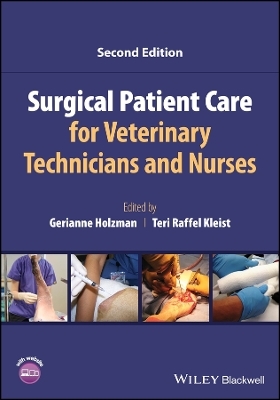Stress responses relating to vaginal examinations in dairy cows
Seiten
2014
Mensch & Buch (Verlag)
978-3-86387-472-8 (ISBN)
Mensch & Buch (Verlag)
978-3-86387-472-8 (ISBN)
- Keine Verlagsinformationen verfügbar
- Artikel merken
Modern farm management has to ensure reproductive efficiency on commercial dairy farms (Roche et al. 2000; Lucy 2001). Thus, vaginal examinations are routine procedures to detect fertility disorders like endometritis (LeBlanc et al. 2002) or silent heat (López-Gatius et al. 1996). While working in a veterinary practice for cattle in Brandenburg, Germany, the veterinarians noticed that cows showed different behavior when being confronted with veterinary personnel compared to the farm personnel the cows were used to. Cows were more restless and more often tried to flee from their cubicles when veterinarians entered the stable. Thus, we wondered whether this behavior might be caused by negative experiences resulting from past vaginal examinations conducted by veterinarians due to puerperal protocols of the farm.
Vaginal and other veterinary examinations or treatments were considered to cause discomfort and stress in cattle (Minton 1994; Petyim et al. 2007). Cows coping with stress show various behavioural reactions depending on the individual, species and breed (Koolhaas et al. 1999). Despite domestication – which limited the range of behavioural reactions – dairy cows are still capable of some feral behavioural reactions (Price 1999). While assessing animal behaviour, etiologists usually describe the mere occurrence of different reactions (Marti et al. 2010), the extent of reactions (Flower and Weary 2006) or use a combination of both (Sprecher et al. 1997). Stress responses in animals were classified into active (fight and flight) and passive (freeze and fiddle about) coping styles (Van Reenen et al. 2005). The reduction of stress during veterinary procedures is assumed to affect animal welfare on farms positively (Waiblinger et al. 2004). Nonetheless, the behaviour of cows relating to vaginal examinations has not been investigated yet.
Therefore, the present thesis “Stress responses relating to vaginal examinations i n dairy cows” was conducted to assess behavioural reactions of dairy cows before and during vaginal examination. It includes two corresponding studies. The overall objective was to evaluate cow behaviour during vaginal examination and whether stress and discomfort in cows during vaginal examinations can be eventually reduced by an adequate examination technique.
In the first study, I determined specific behavioural reactions which cows express their discomfort during vaginal examination with. The goal was to create a tool allowing the assessment of stress responses directly in the stable. I hypothesized that stress responses during vaginal examination can be semi-quantitatively scored with an avoidance reactivity score (ARS) and that the examination with the Metricheck device® is less invasive than the examination with the gloved hand.
Regardless of the assessment method, the interpretation of behavioural reactions is always affected by the individual observer (Sambraus 1998). Physiological parameters such as heart rate measurements were suggested as suitable to improve analyses and interpretations of behaviour more objectively (Koolhaas et al. 1997). Moreover, behavioural reactions can be classified either in states or events, and the registration of presence or absence of a certain stress response can be useful for scoring behaviour (Altmann 1974). Including measurements of the time which is spent in certain behaviour takes additional information for the interpretation of stress responses into account (Altmann 1974). All behavioural reactions of the ARS were frequently shown by cows depending on their chosen scheme of active (fight or flight) or passive (freeze or fiddle about) behaviour. One signal of discomfort – the arched back – was expressed by nearly all cows during vaginal examination. Additionally, the detection of painful procedures in cows can be supported by the use of non-steroidal antiinflammatory drugs (Earley and Crowe 2002; Banting et al. 2008) or epidural anaesthesia which provide both, analgesia and blocked reflexes (Skarda 1996). Thus, we suggested, it might be possible to distinguish between a pain- or reflex-associated origin of the arched back during vaginal examination.
The general objective of the second study was to determine the background intention of the arched back during vaginal examination. Specifically, I hypothesized that avoidance reactions and the duration of the arched back can be influenced by epidural anaesthesia or analgesic treatment.
Vaginal and other veterinary examinations or treatments were considered to cause discomfort and stress in cattle (Minton 1994; Petyim et al. 2007). Cows coping with stress show various behavioural reactions depending on the individual, species and breed (Koolhaas et al. 1999). Despite domestication – which limited the range of behavioural reactions – dairy cows are still capable of some feral behavioural reactions (Price 1999). While assessing animal behaviour, etiologists usually describe the mere occurrence of different reactions (Marti et al. 2010), the extent of reactions (Flower and Weary 2006) or use a combination of both (Sprecher et al. 1997). Stress responses in animals were classified into active (fight and flight) and passive (freeze and fiddle about) coping styles (Van Reenen et al. 2005). The reduction of stress during veterinary procedures is assumed to affect animal welfare on farms positively (Waiblinger et al. 2004). Nonetheless, the behaviour of cows relating to vaginal examinations has not been investigated yet.
Therefore, the present thesis “Stress responses relating to vaginal examinations i n dairy cows” was conducted to assess behavioural reactions of dairy cows before and during vaginal examination. It includes two corresponding studies. The overall objective was to evaluate cow behaviour during vaginal examination and whether stress and discomfort in cows during vaginal examinations can be eventually reduced by an adequate examination technique.
In the first study, I determined specific behavioural reactions which cows express their discomfort during vaginal examination with. The goal was to create a tool allowing the assessment of stress responses directly in the stable. I hypothesized that stress responses during vaginal examination can be semi-quantitatively scored with an avoidance reactivity score (ARS) and that the examination with the Metricheck device® is less invasive than the examination with the gloved hand.
Regardless of the assessment method, the interpretation of behavioural reactions is always affected by the individual observer (Sambraus 1998). Physiological parameters such as heart rate measurements were suggested as suitable to improve analyses and interpretations of behaviour more objectively (Koolhaas et al. 1997). Moreover, behavioural reactions can be classified either in states or events, and the registration of presence or absence of a certain stress response can be useful for scoring behaviour (Altmann 1974). Including measurements of the time which is spent in certain behaviour takes additional information for the interpretation of stress responses into account (Altmann 1974). All behavioural reactions of the ARS were frequently shown by cows depending on their chosen scheme of active (fight or flight) or passive (freeze or fiddle about) behaviour. One signal of discomfort – the arched back – was expressed by nearly all cows during vaginal examination. Additionally, the detection of painful procedures in cows can be supported by the use of non-steroidal antiinflammatory drugs (Earley and Crowe 2002; Banting et al. 2008) or epidural anaesthesia which provide both, analgesia and blocked reflexes (Skarda 1996). Thus, we suggested, it might be possible to distinguish between a pain- or reflex-associated origin of the arched back during vaginal examination.
The general objective of the second study was to determine the background intention of the arched back during vaginal examination. Specifically, I hypothesized that avoidance reactions and the duration of the arched back can be influenced by epidural anaesthesia or analgesic treatment.
| Sprache | deutsch |
|---|---|
| Einbandart | gebunden |
| Themenwelt | Veterinärmedizin |
| ISBN-10 | 3-86387-472-2 / 3863874722 |
| ISBN-13 | 978-3-86387-472-8 / 9783863874728 |
| Zustand | Neuware |
| Informationen gemäß Produktsicherheitsverordnung (GPSR) | |
| Haben Sie eine Frage zum Produkt? |
Mehr entdecken
aus dem Bereich
aus dem Bereich
A Practical Guide
Buch | Hardcover (2024)
Wiley-Blackwell (Verlag)
145,95 €
Buch | Hardcover (2024)
Wiley-Blackwell (Verlag)
124,55 €
Buch | Softcover (2024)
Wiley-Blackwell (Verlag)
95,12 €
